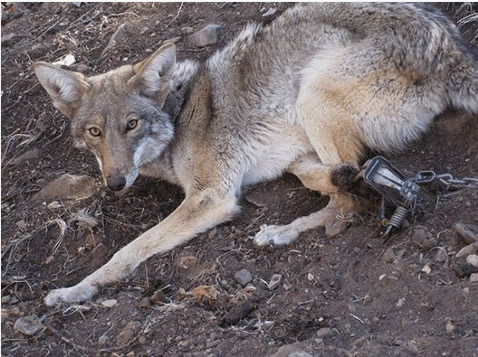Trapped animals are desperate to escape. One of the worst things that can happen to a wild animal in danger is the inability to execute instinctive survival options, flee, fight, freeze or bluff and achieve successful results. With trapping those natural lifesaving behaviors are futile and the trapped animal pays a significant price in doing so…. from dislocations, broken bones, broken teeth, strangling, exposure, exhaustion, expenditure of precious calories, loss of toes, paws, even escaping with the trap still attached. Revealnews “I found a coyote in a trap and it was horrible. I was leading a Sierra Club outing and saw a movement out of the corner of my eye. The coyote was struggling against the trap and the chain. She would lunge to try to get away. She would reach the end of the chain and it would flip her over. And she would do it again. The trap was slowly wrenching her foot off. Trappers have a name for that. They call it a wring-off. It totally changed the outing, to see that suffering. When I got home, I called a game warden. We agreed to meet the next morning. When we got there, she had managed to completely finish the job. She had wrung her foot off and was no longer in the trap. I don’t know what happened to her. I am haunted still. It was so horrible.” – Retired New Mexico high school teacher Mary Katherine Ray. This photo she took of the coyote is now the logo for Trap Free New Mexico. Senior reporter @tom.knudson is sharing photos and stories from his reporting on America’s booming fur trapping industry and its hidden toll on wildlife. Read his full investigation on website, revealnews.org.
